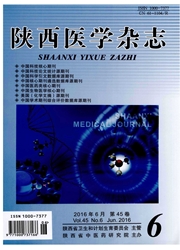

 中文摘要:
中文摘要:
目的:运用三维步态分析比较运动再学习疗法和神经发育学疗法在治疗脑卒中后偏瘫步行能力的效果。方法:选取脑卒中偏瘫患者89例,随机分为实验组45例和对照组44例。实验组采用运动再学习疗法,对照组采用神经发育学疗法,两组患者均治疗8周。比较两组患者治疗后的步态分析中的步态周期时间、双支撑时间、单支撑时间比率、步速、跨步长比YY率参数。结果:实验组各项步态参数均值优于对照组,且两组间比较有显著性差异(P〈0.05)。结论:运动再学习疗法相对于神经发育学疗法在治疗偏瘫步行能力方面具有更好的效果。
 英文摘要:
英文摘要:
Objective:Use three-dimensional analysis to compare the effect of motion relearning programme and neural phylogenetic therapy on the gait of patients with hemiplegia after stroke.Methods:89 patients with hemiplegia after stroke were selected randomly into experimental group(45 patients) and control group(44 patients).Motion relearning programme was applied in experimental group,while neural phylogenetic therapy in control group for 8 weeks respectively.Gait circle,double support time,the ratio of single support time,velocity,the ratio of stride length in gait analysis were compared between two groups after treatment.Results:The average value of all gait parameter was higher in experimental group than that in control group,and there was significant difference between two groups(P0.05).Conclusion:Motion relearning programme is more effective than phylogenetic therapy in the improvement of walking ability of patients with hemiplegia.
 同期刊论文项目
同期刊论文项目
 同项目期刊论文
同项目期刊论文
 期刊信息
期刊信息
